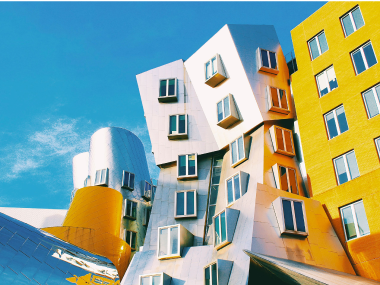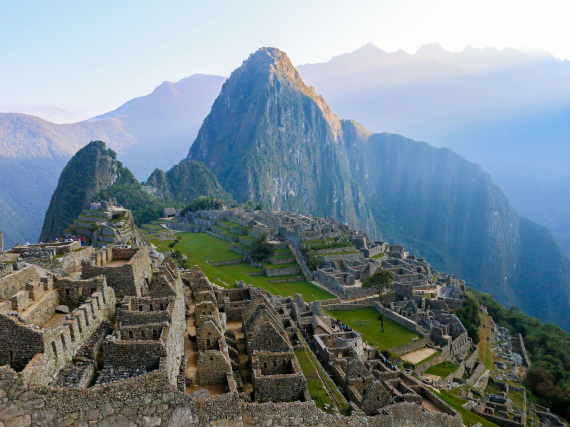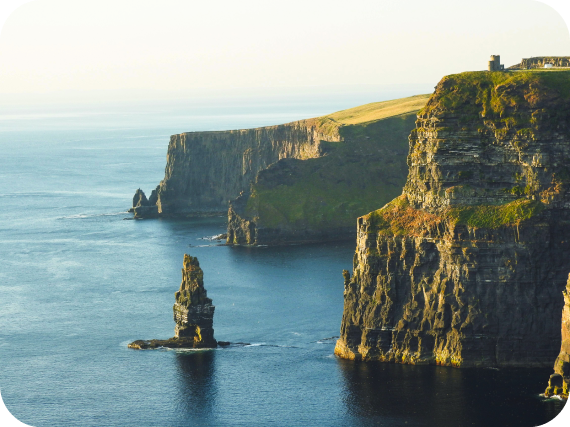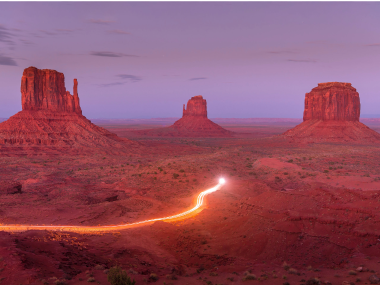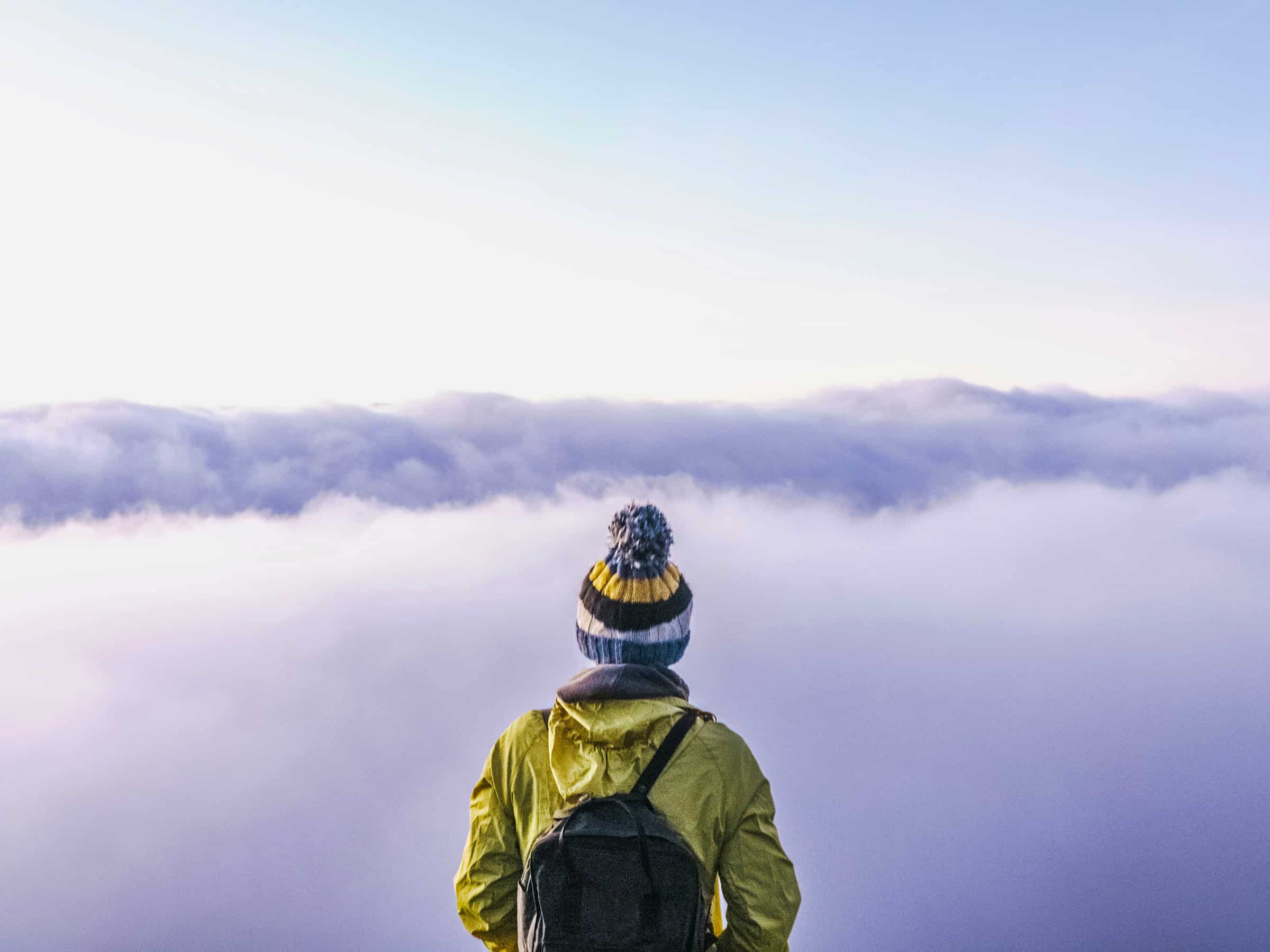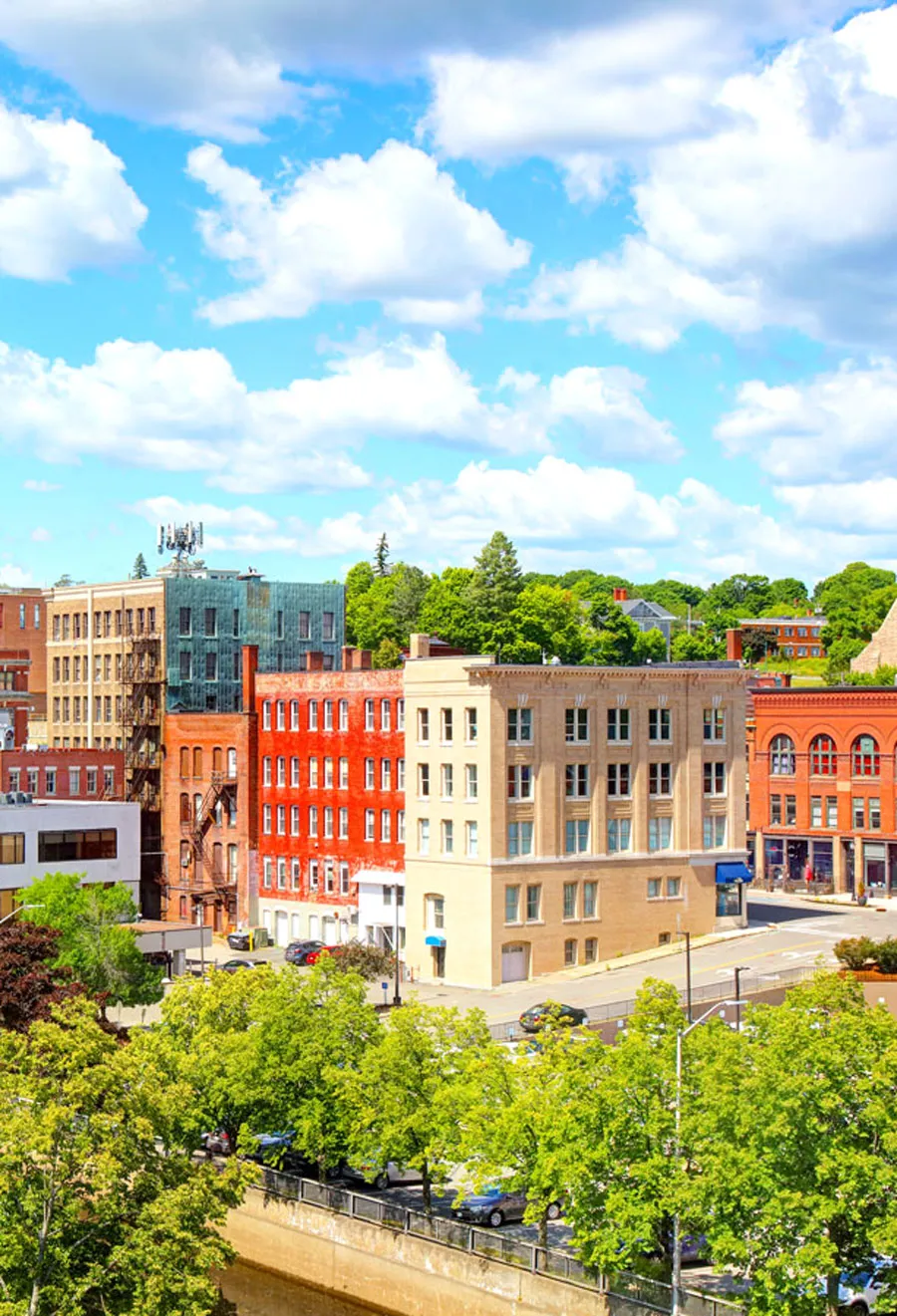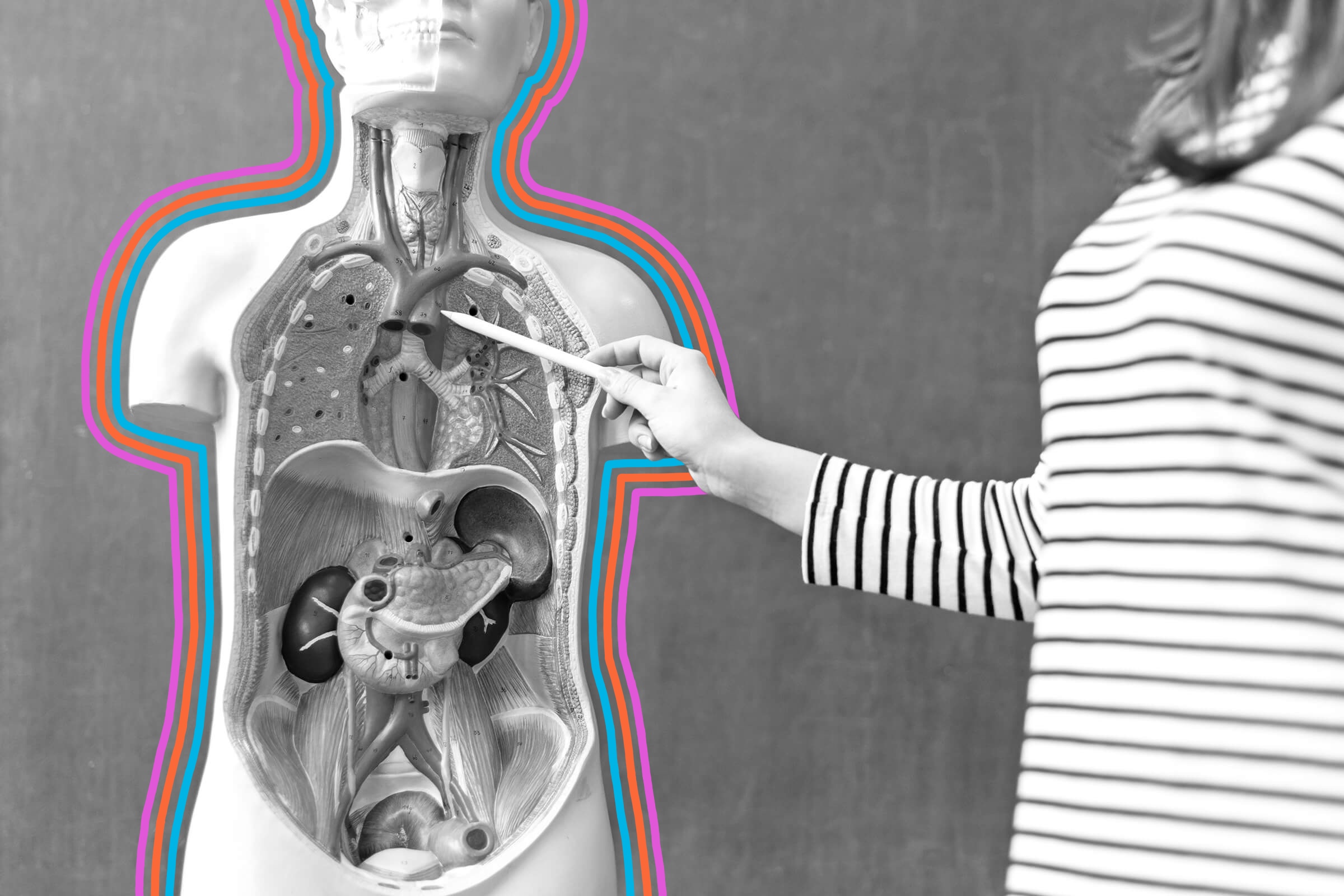Hate traveling in high humidity? Look no further — we’re taking a look at the 20 least humid states in the U.S. These rankings are based on data compiled by climatologist Brian Brettschneider for Forbes, which analyzed a metric known as dew point — a measurement of the total amount of moisture in the air. The lower the dew point, the drier (and less humid) the air will feel, whereas higher dew points are closely associated with unpleasant mugginess. Discover the 20 least humid U.S. states based on their average annual dew point. (And, if you’re curious, we’ve also ranked America’s most humid states.)
20. New York
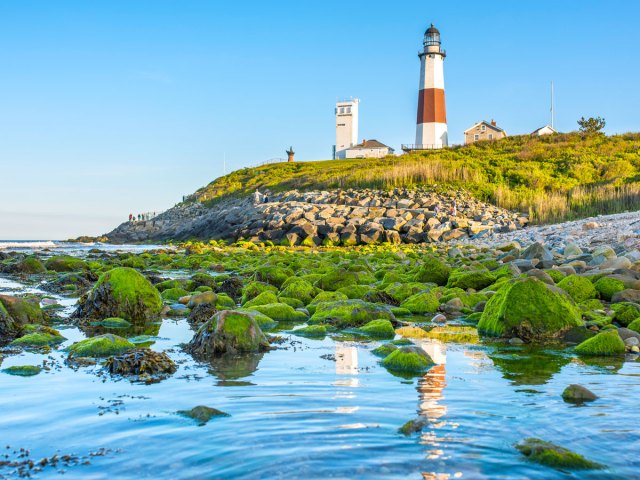
Average annual dew point: 39.4 degrees Fahrenheit
New York is a state that experiences four true seasons, so the dew point can vary substantially throughout the year. For instance, in central New York, the dew point bottoms out at 16.1 degrees in January and rises to 66 degrees in July. A similar trend is seen in New York City, where the dew point tends to hover in the 20s and 30s between November and April, before rising up to the 40s, 50s, and 60s throughout the summer. All told, the average annual dew point throughout New York state comes in at just under 40 degrees, which places it among the 20 least humid states in the nation.
19. Oregon
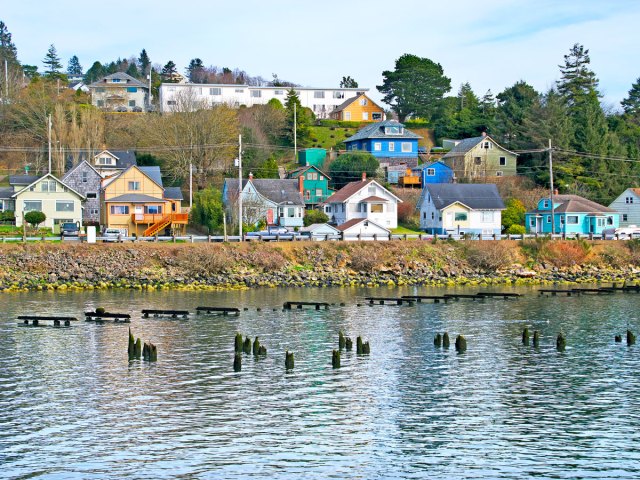
Average annual dew point: 39.0 degrees
Given its proximity to the ocean, Oregon’s coastal region tends to have more moisture in the air than the eastern parts of the state. But no matter where you find yourself in the Beaver State, the humidity shouldn’t be too overwhelming. For example, Portland has a fairly narrow dew point, between 36 and 54 degrees year-round. This falls below the 55-to-65-degree range, which the National Weather Services considers “sticky” and “muggy.” However, the lack of humidity does have its drawbacks, as Oregon has seen an increased risk of wildfires and droughts during particularly dry summers in recent years.
18. Michigan
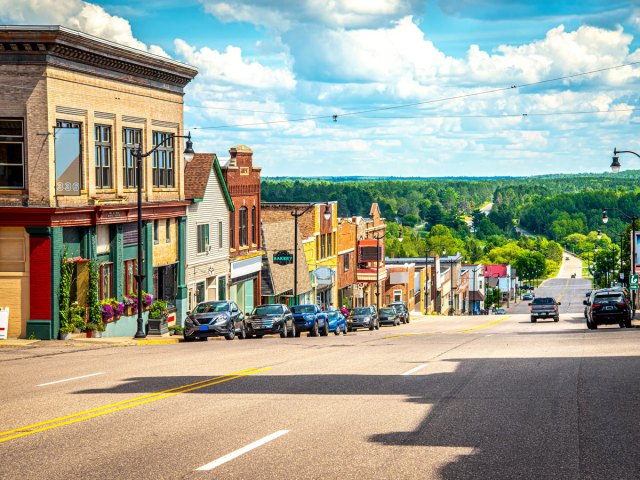
Average annual dew point: 38.0 degrees
Michigan sits adjacent to four of the five Great Lakes, so there’s definitely a lot of moisture in the air. But despite that, Michigan’s average dew point isn’t considered too oppressive. Measurements from Detroit, for instance, indicate that the city’s annual dew point bottoms out at 19 degrees in January and rises to only 61 degrees in July. While a dew point of 61 does mean some muggy days, it falls short of the severe humidity more commonly found in the South. Dew points dip even lower in Michigan’s Upper Peninsula, where averages range from around 10 degrees in the winter up to the mid-50s in summer.
17. Nebraska
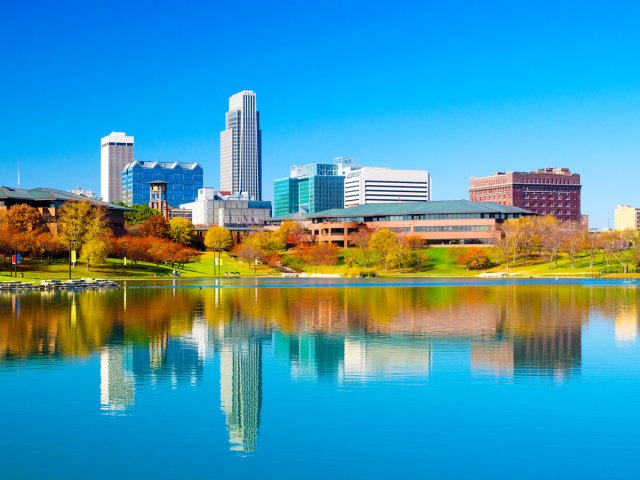
Average annual dew point: 37.9 degrees
Though Nebraska has experienced an abnormally humid summer in 2025, on average, it ranks as the 17th-least-humid state in the nation. Dew points tend to be lower in the western part of the state, as elevations rise from east to west as you get closer to the Rocky Mountains. This is because higher elevations tend to have thinner air, which can only hold so much moisture. But even in Omaha, in the eastern part of Nebraska, there’s only a 57% chance of the dew point going above 65 degrees, and that’s mostly in July.
16. Wisconsin
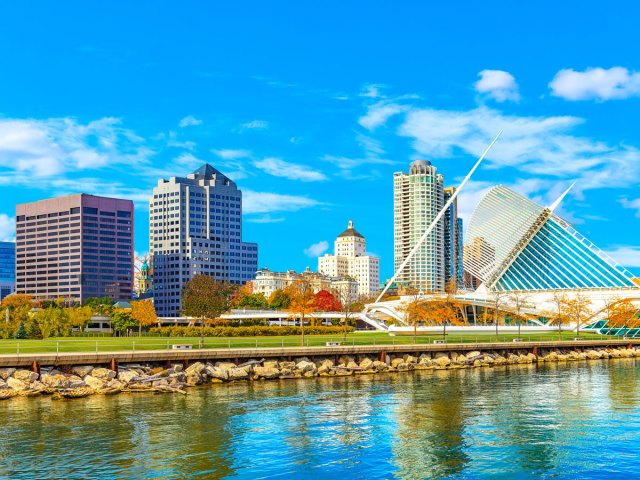
Average annual dew point: 37.1 degrees
Even in the dead of summer, there’s less than a 40% chance of experiencing sticky, unpleasant weather in Wisconsin cities like Madison and Milwaukee. In Madison, in particular, there are only 30 days each year that could be considered very humid, mostly in July and August. For the remaining 10 months of the year, the weather is relatively dry throughout the Badger State.
15. New Hampshire
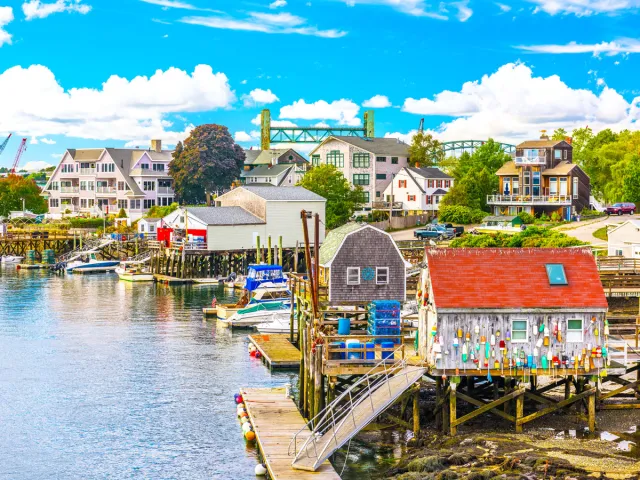
Average annual dew point: 36.2 degrees
The coastal town of Portsmouth experiences roughly 9.2 muggy days each July. But with only 18 miles of coastline in the entire state, most cities in New Hampshire are located further inland. This separation from the ocean means less humidity in the air — and fewer sticky days to boot. For instance, Claremont, located in the west-central part of the state near the Vermont border, sees dew point averages dipping as low as 13 degrees in the winter and rising to just over 61 degrees in summer.
14. Vermont
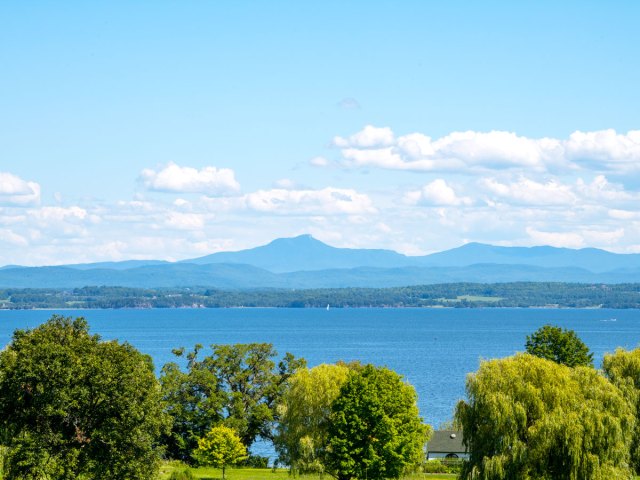
Average annual dew point: 35.9 degrees
Vermont’s average annual dew point comes in at just under 36 degrees. In the capital of Montpelier, the monthly average hovers around 11 degrees in the winter and up to 58 degrees in July, with October being the closest to the state’s annual average. Over in Burlington, which is located in the northwestern part of the state along Lake Champlain, there’s only a 23% chance of encountering a muggy day in July. From October through April, the odds of experiencing noticeable humidity are more or less zero.
13. South Dakota
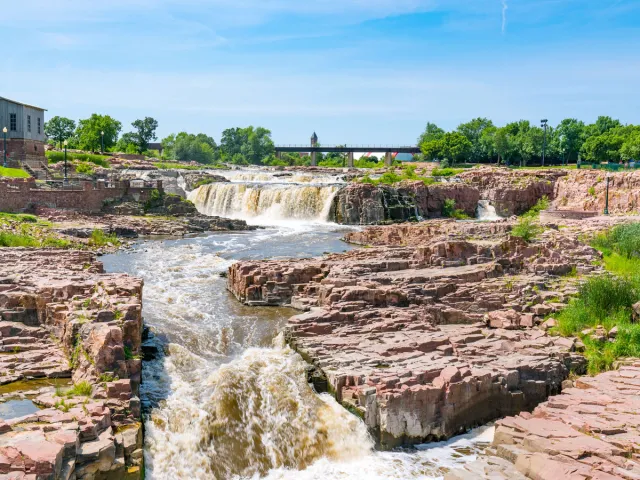
Average annual dew point: 34.6 degrees
In eastern South Dakota cities such as Sioux Falls, there tend to be around 25 to 30 notably humid days each year — still fewer than you’ll find in the more humid Gulf states. As you travel farther west, you’ll find even fewer humid days. Rapid City, located along the Black Hills National Forest in western South Dakota, experiences fewer than two humid days each year on average. The state follows a similar pattern to the neighboring state of Nebraska — as you travel west, elevations rise, the air becomes thinner, and humidity decreases.
12. Maine
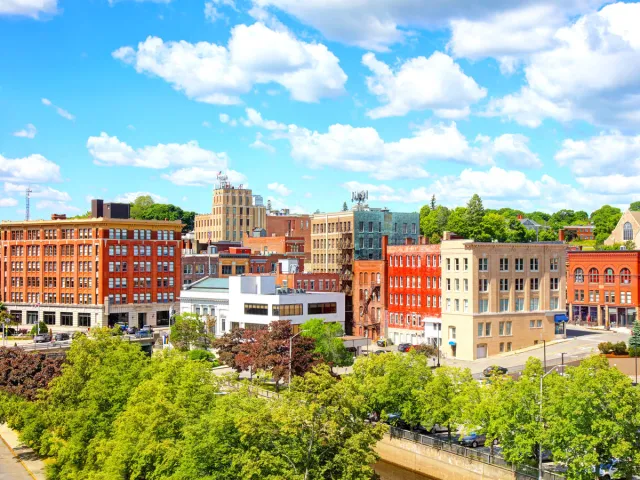
Average annual dew point: 34.4 degrees
Though Maine ranks in the top 10 in terms of “relative humidity” — a statistic that measures the amount of water vapor in the air relative to how much it can hold — many climatologists consider that a less accurate reading than dew point when it comes to what the average person experiences as humidity. In terms of dew point, the Pine Tree State ranks as the 12th-least-humid state in the U.S. However, recent climatological trends have shown an increase in statewide humidity throughout Maine. In Bangor, for example, 2021 was the most humid summer on record. Even still, truly humid days in Maine continue to be few and far between.
11. Minnesota
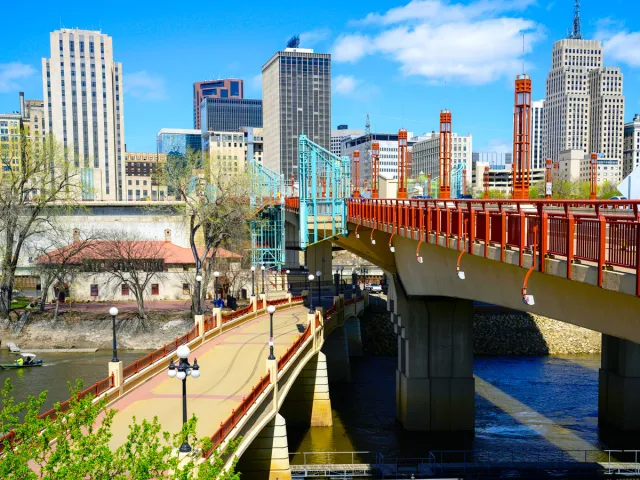
Average annual dew point: 33.9 degrees
Minnesota is home to the Northwest Angle, the northernmost point in the Lower 48. Given its northerly location, the state tends to experience drier summers than many of the states located farther south toward the Gulf. For instance, the lowest dew point ever recorded in the Twin Cities was just 10 degrees in 2020. But even in those hot Minneapolis summers, average dew points tend to max out at around 61 degrees, resulting in a generally dry and pleasant environment.
10. North Dakota
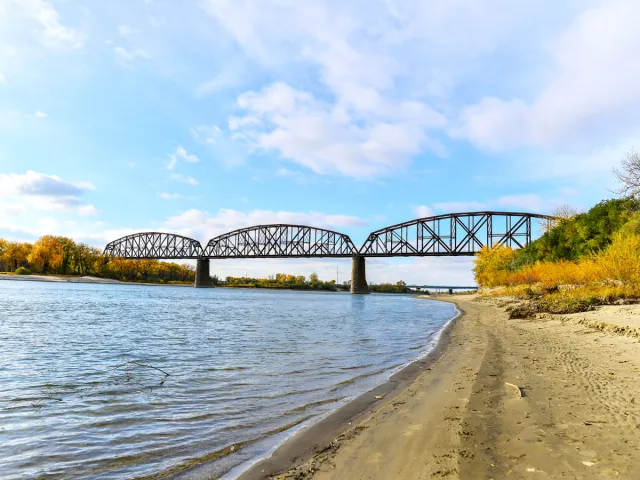
Average annual dew point: 32.6 degrees
North Dakota ranks as the 10th-least-humid state in the U.S. The state capital, Bismarck, sees average dew points dip as low as the single digits in January. On the flip side, the city’s dew point typically peaks around 58 degrees in July. The Red River Valley, which is located in the northeastern part of the state, tends to be the most humid part of North Dakota, thanks to the additional moisture in the air from the river.
9. Arizona

Average annual dew point: 32.5 degrees
Arizona has a reputation for its dry heat, one reason so many retirees and snowbirds flock there. Not only does Arizona boast the ninth-lowest statewide average dew point in the country, but it also has the second-lowest relative humidity, at 38.5%. Those two metrics combine to create dry air conditions throughout the Grand Canyon State. Notably, in the retirement community of Youngtown, the minimum average dew point fell as low as -4.1 degrees in February 2011.
8. Idaho
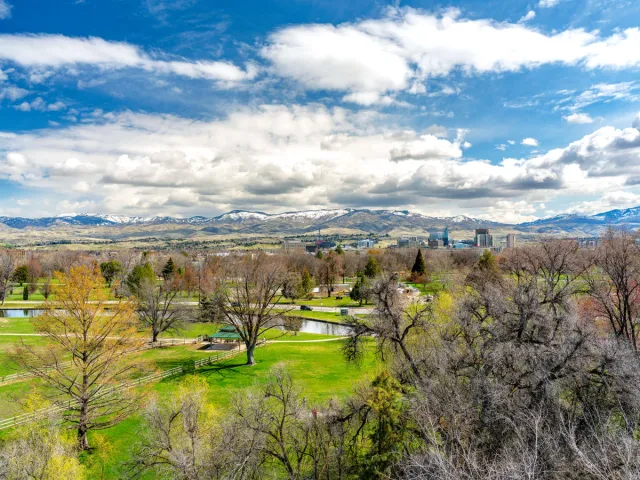
Average annual dew point: 30.9 degrees
In general, low dew point levels mean dry summers and mild winters for those living in Idaho. Things are especially comfortable year round in Boise, where the dew point rarely exceeds 60 degrees on even the hottest of summer days. As you go north in Idaho, the dew point drops even further. Take, for instance, the community of Fernwood, which recorded a record low dew point of -33.9 degrees in January 2024. The Snake River plateau is the driest area in Idaho, with less than 10 inches of annual partial precipitation.
7. New Mexico
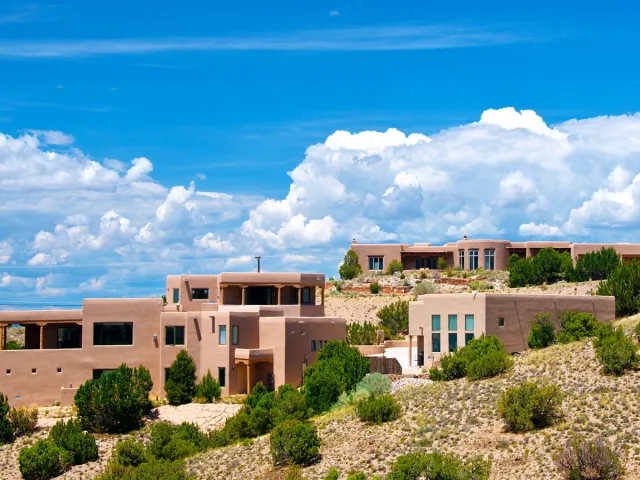
Average annual dew point: 30.8 degrees
Much like the neighboring state of Arizona, New Mexico is a haven for those who loathe humid weather. The state has the seventh-lowest average dew point and third-lowest relative humidity in the country. In Albuquerque, the dew point averages 44.5 degrees from June to September. The state’s dry climate is attributable to its low precipitation levels, plentiful amounts of unobstructed sunshine, and mountainous terrain.
6. Montana
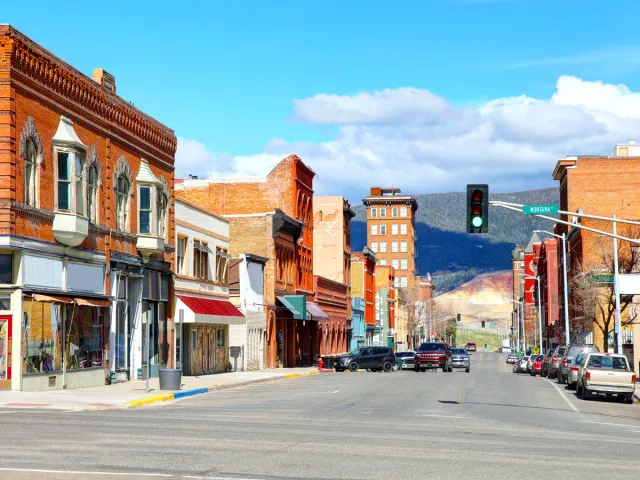
Average annual dew point: 29.7 degrees
Despite Montana’s reputation for having low humidity, KULR in Billings reports that regions east of the Rockies have seen a 2.5-degree increase in average summer dew point since 1950. As climate scientist Cameron Lee told the station, “This is showing a massive increase over a relatively short period of time.” So despite Montana’s ranking as the sixth-least-humid state for now, changing climate trends are likely to have a continued impact on the state’s overall humidity levels going forward.
5. Colorado
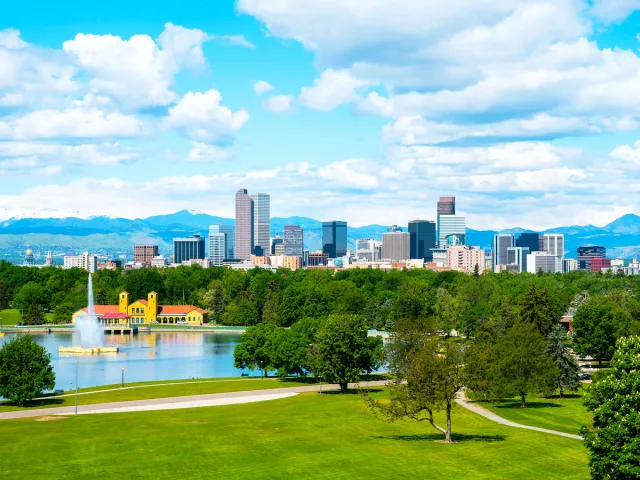
Average annual dew point: 28.8 degrees
With the fifth-lowest dew point and fifth-lowest relative humidity in the country, the Centennial State is known for its dry summers and winters. For example, the northern Denver suburb of Thornton sees dew points dip as low as -14.9 degrees. That said, the city of Denver just experienced its highest dew point in 17 years, hitting 66 degrees in July 2025. But generally, the high elevation and thin mountain air of Colorado keeps the air from holding too much moisture.
4. Utah
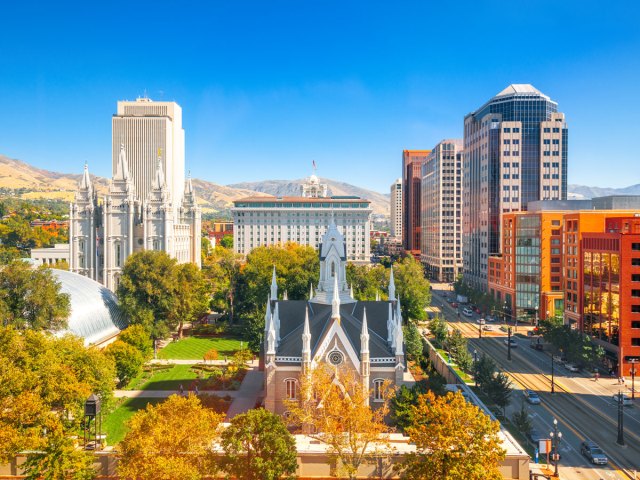
Average annual dew point: 28.6 degrees
Similar to neighboring Colorado, Utah’s combination of mountainous and desert terrain contribute to less humidity in the air. Even though temperatures can spike into the triple digits in summer, the lack of humidity means that weather is often more manageable. In Salt Lake City, for instance, average dew point tends to fall into a very narrow range between 23 degrees in the winter and 45 degrees in the summer. Additionally, with less moisture in the air, Utah’s skies tend to be a deeper shade of blue, according to the state’s official tourism board.
3. Nevada
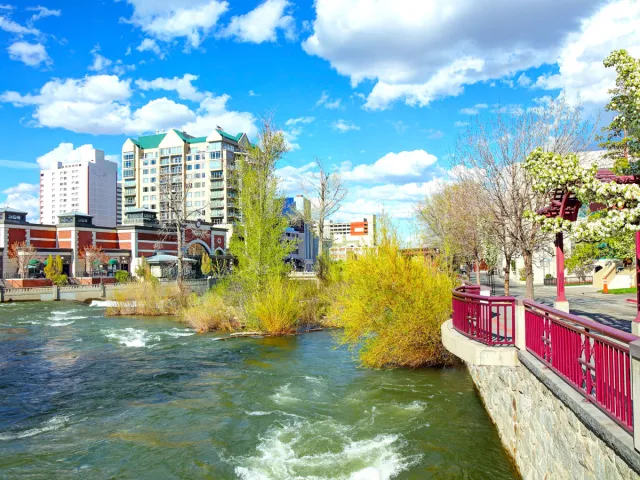
Average annual dew point: 27.5 degrees
Not only does Nevada have the third-lowest dew point in the U.S., but it also boasts the lowest relative humidity of any state. According to data from WeatherSpark, the city of Reno boasts the most dry days anywhere in the nation, with an average of 363.91 days annually, followed by the nearby city of Sparks, with 363.78 days. (Outside of Nevada, the U.S. city with the most dry days is Bend, Oregon, with 363.66). Farther south in Las Vegas, dew point averages rarely exceed 44 degrees; they spend most of the year in the 20s or low 30s.
2. Wyoming
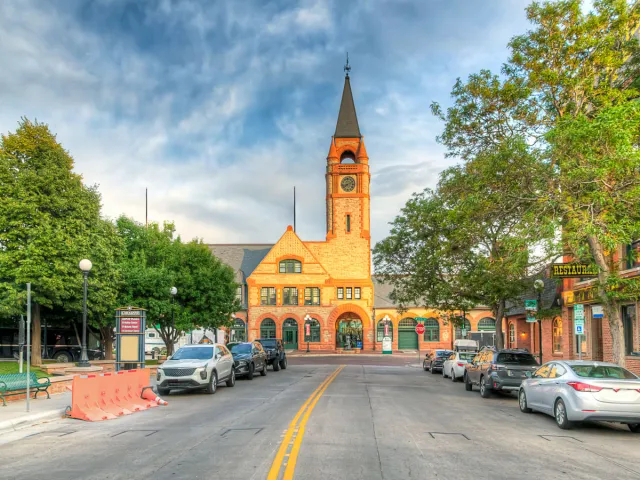
Average annual dew point: 26.9 degrees
In Wyoming’s capital, Cheyenne, the average dew point maxes out at 46 degrees in the dead of summer, while in winter, averages drop as low as 10 degrees. The driest part of the state is the Big Horn Basin, located in Wyoming’s north-central region. The basin’s lower portion experiences only 5 to 8 inches of annual precipitation, as the surrounding mountain ranges block moisture from entering the area, keeping humidity levels low.
1. Alaska
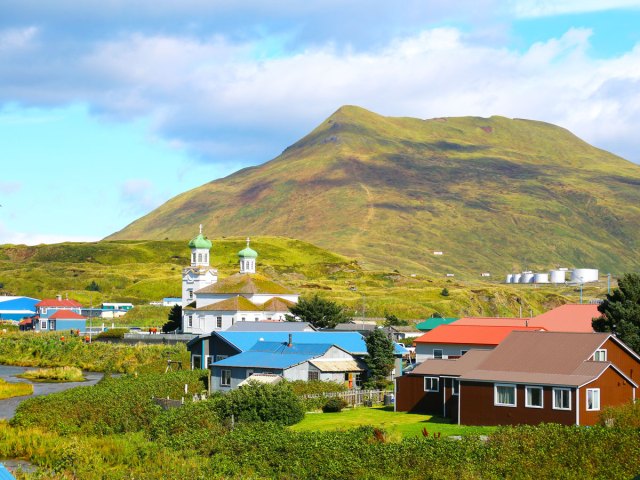
Average annual dew point: 26.5 degrees
Despite having the highest relative humidity of any state, Alaska ranks dead last in terms of the dew point metric. This is because colder air masses frequently seen in Alaska can’t hold as much moisture as warmer air masses. So while the relative humidity in Alaska may be higher, the average statewide dew point is the lowest of any state. In Anchorage, the average dew point caps out at 50 degrees in July, but tends to sit in the teens from November through March. However, there are some more humid exceptions in Alaska, such as St. Paul Island of the Aleutians. St. Paul is surrounded by the ocean on each side, so moisture levels tend to be higher there than in other areas in Alaska.
More from our network
Daily Passport is part of Inbox Studio, which publishes content that uplifts, informs, and inspires.
